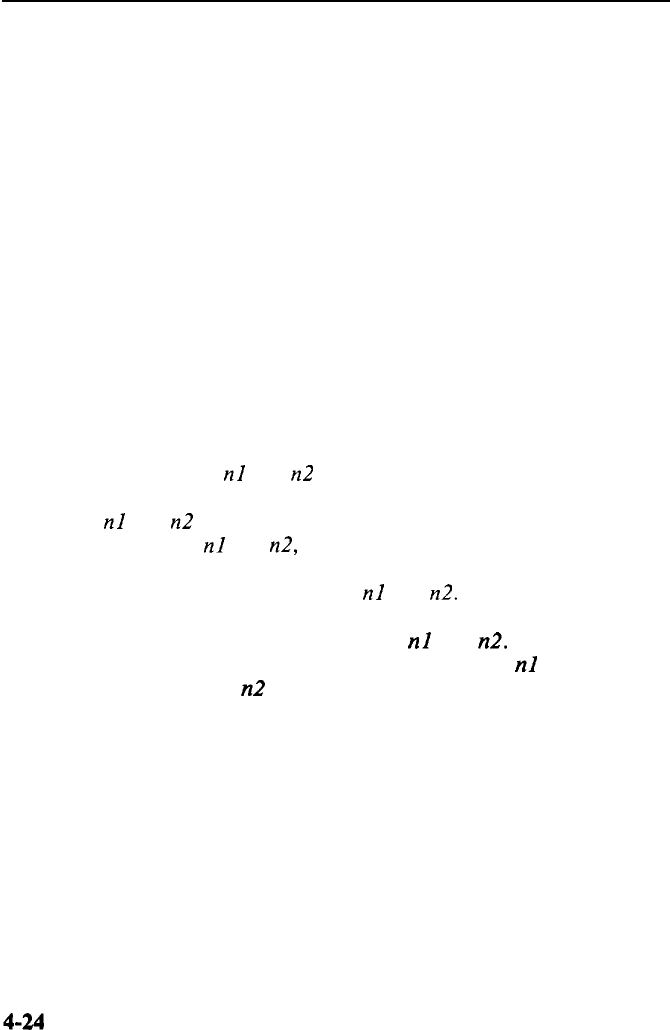
User-Defined Characters
Sending information to the LQ
The printer loads characters in the print style (Letter Quality,
draft, or proportional) that the printer is currently using. It also
records whether italic or script (either superscript or subscript) is
turned on. This means that if you want to print a character in the
italic mode, for example, you must have the italic mode turned on
when you define the character.
The LQ command to define characters is one of the most
complex in its repertoire. The format of the command is this:
ESC & 0 n1 n2 d0 d1 d2 data
The ESC & is simple enough. The 0 (which is ASCII code 0, not
the numeral zero in quotation marks) allows for future
enhancements. At this time it is always ASCII 0.
With the LQ, you can define many characters with a single
command. The values
nl
and
n2
are the ASCII codes of the first and
last characters you are defining. If you are defining only one
character,
nl
and
n2
are the same. You can use any codes between 0
and 127 decimal for
nl
and
n2,
but it is best not to define decimal 32,
which is the code for a space. Also, you can use letters in quotation
marks instead of ASCII numbers for
nl
and
~22.
An example will show how to specify
nl
and
n2.
If, for instance,
you wanted to redefine the characters A through Z,
nl
would be A
(or ASCII code 65) and
n2
would be Z (or ASCII code 90). So the
command ESC & 0 AZ (followed by the appropriate data) would
replace the entire alphabet of capital letters.


















